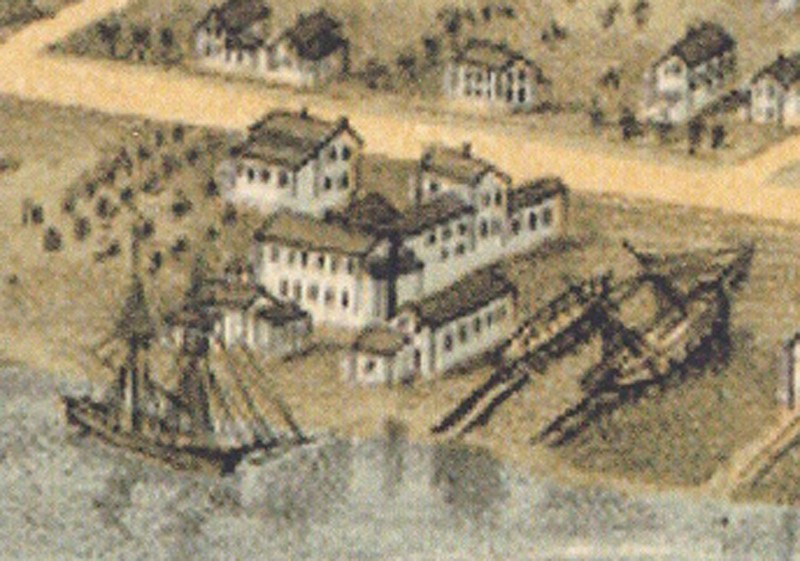Goliath
Introduction
Text-to-speech Audio
Goliath Built – 1846 131 ft. x 25 ft. x 9 ft. The Goliath was a steam barge with a propeller. She was built as a cargo carrier only, no passengers. Later in the same year she was launched, the Goliath was wrecked off of Black River but was later raised. In September 1848, a boiler explosion ignited 200 kegs of gunpowder causing a devastating explosion near Lake Huron’s Saginaw Bay. 18 people died in the explosion. 1000 barrels of flour and maize meant for mining towns in Michigan’s Upper Peninsula littered the shoreline around Goderich, Ontario. The cargo had been loaded in Buffalo, New York and Detroit, Michigan.
Images
Artist's drawing of Goliath under construction in St. Clair shipyard.

Brass plaque showing Goliath's year built and length.

Backstory and Context
Text-to-speech Audio
As you walked south from the “Starting Point” plaque to this location on the St. Clair River Boardwalk, the brass plaque marked Goliath on the boardwalk represents the bow of the Great Lakes freighter Goliath. The brass plaque at the Starting Point represents the stern or back of every ship included in this walking tour. By looking back to the starting point, you are able to get an estimate of the size or 131 ft. length of the Goliath.
Sources
St. Clair, by Charles Homberg, St. Clair Historical Commission, 2007; St. Clair Historical Museum and Research Center archives; Great Lakes Ships data base, Alpena County George N. Fletcher Public Library, Alpena, Michigan; Great Lakes Freighters by Rand Shackleton, Thunder Bay Press, 2003.
